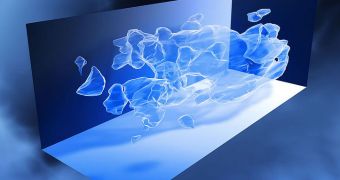A group of astronomers argues that their field of study appears to be largely oblivious to the fact that 3D technologies are available for scientific instruments. Astronomy could be made more appealing to both scientists and the general public if 3D tools were to be introduced in its use.
The necessary equipment is there, and many researchers are already using stereo cameras and so on. However, if a rover or an orbiter departs Earth for another destination in the solar system carrying a stereo camera, than that is an exception, and not the norm.
By using this type of technologies more often, investigators could aid both their own research, and captivate the imagination of the general public. In order to achieve this, observatories will have to make an initial investment in the new technology.
At the same time, the scientific return would be massive compared to that of 2D methods. A three-dimensional image contains many times more data than a bi-dimensional counterpart. In astronomy, even the smallest datasets can lead to the discovery or confirmation of new phenomena.
According to the two astronomers that wrote the new study – Australian National University expert Frederic Vogt and Alexander Wagner – experts in their field could follow the example of biochemists, who are the champions of 3D scientific visualizations.
Even when the age of computers was just beginning, experts in this field were using the new possibilities to generate 3d representations of different molecules. They adopted the new technology because there was no other way for them to understand the chemicals they were analyzing.
However, astronomers simply want to learn more by building larger telescopes, which are not necessarily more adept at bringing in new data. The team argues that installing 3D capabilities on existing machines could change the face of modern astronomy.
“Stereo pairs are not merely an ostentatious way to present data, but an enhancement in the communication of scientific results in publications because they provide the reader with a realistic view of multi-dimensional data, be it of observational or theoretical nature,” the team says.
There are also more than one ways of looking at 3D images, including free viewing. “With the left and right images side-by-side, it is up to the reader to have each eye looking at one image only, thus recreating the 3D feeling,” the team adds, quoted by Technology Review.
Simple computer software can combine stereo images into .gif animations, Vogt and Wagner goes on to say. In this manner, even home computer users may be able to create their own 3D representations of Martian landscape, for instance, or anything else, for that matter.

 14 DAY TRIAL //
14 DAY TRIAL //